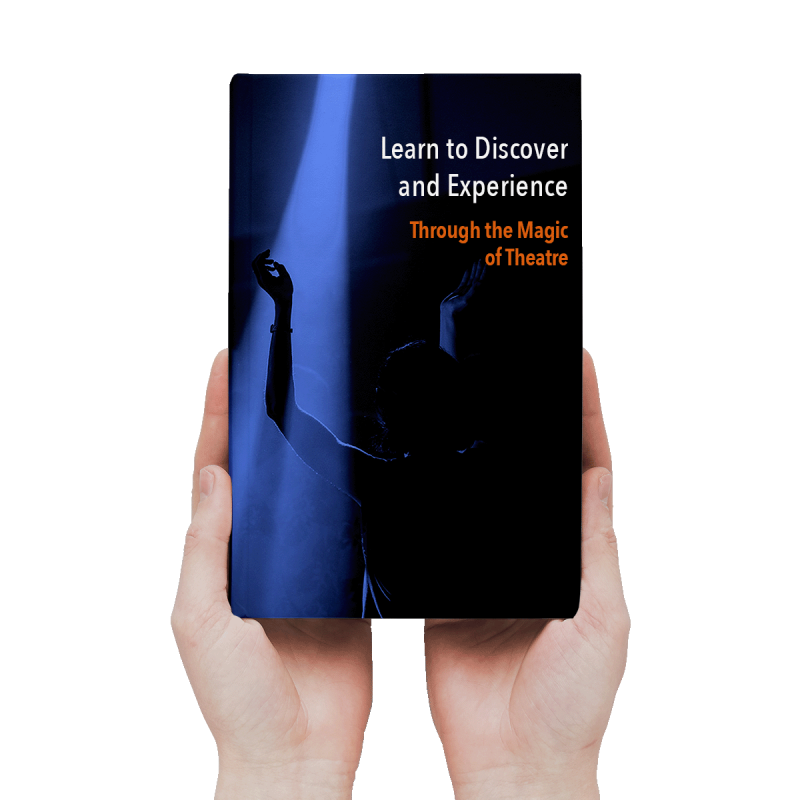Exercise: Fortunately, Unfortunately
20 MIN
Group exercise
This exercise reinforces several key elements of good storytelling in improvisation: making sure that what you say follows and builds on what came before. Your focus must follow the reason, the action and the result.
This exercise is about creating a story by contrasting events. The first one is a positive one that “fortunately” is happening and then, there is a contra- circumstance that creates a complication that “unfortunately” happens to the character. This is basically what creates a conflict and a story to tell.
The exercise is good for developing active listening and sensing as a group. You have to pay attention to how a story is headed and developed, and when it’s over.
By this exercise you can train your mind to open up and see that there is always a way to overcome the obstacles - by using the power of imagination and action justification.
1. Prepare
You need to agree as a group that you are creating a story which has a beginning, development, culmination, and an end.
You can also agree on the duration of the game and the condition that all the elements of the story structure must be created before time is over.
If there are more people doing this exercise, then you can have the fun of doing it in a competition between two (or more) groups, where each group must develop the story in max 5 min.
It is recommended to all participants to stand up and be in an active mode.
2. Do It
Do it in a group of 4 players, everyone of each has a different task:
- One narrator, who always creates a sentence starting with “Fortunately...”
- One narrator, who always creates a sentence starting with “Unfortunately...”
- One player physically expressing the action
- One player who expresses the action by voice and sound
The game begins with the player who starts the narrative with “Fortunately...” (then thinks up an event that seems fortunate to them). Once they hear the narrative, the physical and the sound storytellers express the event of the story using their “tools”.
Narrator 2 enters the story by breaking the mood with “Unfortunately...” (then thinks up an event that will change the action) and again the physical and the sound storytellers express that event of the story.
The whole group goes on with the storytelling until it reaches a happy end.
Example
Narrator 1 starts: “Fortunately, I won the lottery today”
The Physical storyteller: doing a gesture expressing the event: for example, gesture of joy.
The Sound storyteller: making a sound for example, “Ye-e-e-e!”
The Physical and Sound Storyteller should follow closely each other.
Narrator 2: “Unfortunately, I lost the ticket”.
The Physical storyteller: doing a gesture expressing wander of how it happened.
The Sound storyteller: making a sound that is fitting the event - for example, strong wind blowing.
The Physical storyteller: doing a gesture expressing the event acts physically upon the proposition that the wind has blown the ticket away.
This cycle of fortunately-unfortunately continues until the “story” reaches resolution and ends.

Learn to Discover and Experience
Through the Magic of Theatre
Content
Part 1: Training Qualities and Skills
- Chapter 1: Learn How to Relax and Concentrate
- Chapter 2: Learn How to use Your Body
- Chapter 3: Learn How to use Your Voice
Part 2: The Actors' Invisible Tools
- Chapter 4: Learn How to Use Your Imagination
- Chapter 5: Learn How to Use Your Memories and Senses
- Chapter 6:Learn How to Adapt and Improvise
Hent din gratis udgave
Du kan modtage bogen "Learn to Discover and Experience - Through the Magic of Theatre" (på engelsk) ved at udfylde formularen nedenfor.
Du vil modtage bogen på mail i PDF-format.
Bestil workshop: Læring gennem teaterproduktion
Denne workshop henvender sig til dig der vil lære at skabe en teaterforstilling, hvor fokus er på den pædagogiske indvirkning. Du vil lære at organisere processen gennem professionelle teater-metoder.
Kontakt os hvis du er interesseret via formularen nedenfor: